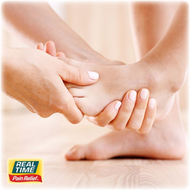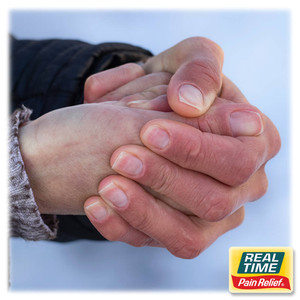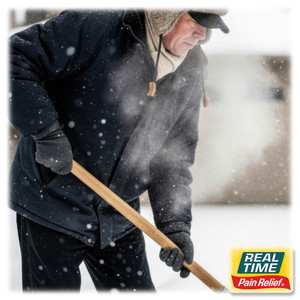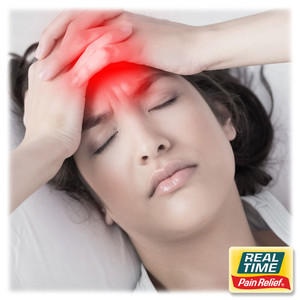Pain Relief Tips for Children
16th Nov 2022
If your child ever deals with pain, it can be a trying situation, especially if the pain makes it hard to get good sleep at night. As a parent, you will do anything you can to help them get relief. Luckily, there are some alternatives for pain relief that don’t have a long list of side effects.
Before reaching for a pill bottle, here are 6 tips to try the next time your child needs pain relief.
1) Heat or Cold Therapy
Everyone knows that heating pads and ice packs are effective, but do you know what method to use based on the symptoms?
If your child has swelling accompanied with pain, apply ice. Cold therapy reduces blood flow to the injured area and can help to provide relief for swelling and pain.
Apply heat therapy when you are dealing with a muscle cramp or spasm, or stiff and sore muscles. Heat helps muscles relax by increasing blood flow to tense muscles.
Bonus Tip: Avoid heat application if swelling is present. Heat causes blood vessels to dilate, which can increase the pain and inflammation.
2) Topical Pain Relief
Quality topical analgesic lotions provide fast relief to the site of pain. And, when your child is in pain, you want to give them relief as fast as possible. One of the things most people love about topical pain relief lotions is that they absorb and work quickly, rather than waiting for a pill to kick in and provide relief. Ingredients to look for in a topical lotion include menthol, arnica, emu oil, hemp oil, calendula, willow bark, and more.
Make sure to find a topical pain relief lotion that has lower menthol concentrations (0.5-1.5%). As an adult, you may like one that is particularly strong, but menthol concentrations over 3% can cause topical discomfort or irritation, especially for children.
Safety Tip: Test topical lotions on a small area of skin first, to check for any discomfort or irritation.
3) Massage
A gentle massage can help to relieve muscle tightness and soreness and might help your child relax. Massage is an effective pain management tool because it helps to increase circulation and relax tension. In fact, there is literature dating back more than 2,000 years that actually describes massage techniques as a way to help manage pain.
You can find a licensed massage therapist to visit regularly, or you can find some books or online resources to learn about the best massage methods to try to help your child get some relief.
Bonus Tip: During a massage is a great time to apply a soothing topical pain relief lotion. Topical lotions containing menthol can relieve aches and pains, muscle strains, cramps, sprains, and more. There are also homeopathic formulas containing arnica as the active ingredient; they can be effective for pain, bruising, and stiffness.
4) Soak in a Warm Bath
Soaking in a warm bath helps muscles relax. It is also known as Hydrotherapy and has been used for centuries because it is relaxing, and it can help provide relief if someone is suffering with body aches, or other pains.
For an extra soothing bath, try adding a bath bomb to the water. If you find the right bath bomb containing an active ingredient for pain, like Arnica, you can turn a simple bath into a pain-relieving experience. Bath bombs are designed to fizz and dissolve in warm water, and some formulations release beneficial ingredients into the water like Arnica, Willow Bark, Helichrysum, Turmeric, and more.
5) Calcium and Vitamin D
Kids’ skeletal systems grow rapidly, so proper nutrition is important for making sure that their muscles and bones develop well. Kids need lots of calcium and Vitamin D, especially teenagers. Their bodies are very efficient at absorbing calcium from food sources so providing adequate amounts of calcium-rich foods is highly recommended, and might even help to prevent muscle cramps or injury.
Also try to pay attention to how much caffeine and salt your child consumes. Excessive amounts can affect levels of calcium in the body. Other beneficial nutrients to give children include Magnesium, Vitamin K, good sources of protein, zinc, B vitamins, vitamin A, and other micronutrients. You can find numerous books and online resources about children’s nutritional needs for healthy growth and development.
6) Proper Hydration
Staying hydrated is very important when it comes to preventing muscle cramps or tension. As the body dehydrates, muscles become more susceptible to tightness. Sweating causes the body to lose electrolytes, and an electrolyte imbalance can lead to muscle spasms and cramps. On days that children are active and sweating, encourage them to drink plenty of water, and explain why it is important.
As an additional option, you could give them a low-sugar electrolyte drink. But not too much, because excessive amounts can be counterproductive; drinking water is the best way to stay hydrated.
For over 20 years, families across the U.S. have turned to Real Time’s lotions and creams for PAIN RELIEF YOU CAN TRUST®. From Lifestyle Essentials, through our Nujuvena line, to Pain Relief Formulas, Real Time has you covered.
Resources:
https://www.iofbonehealth.org/sites/default/files/PDFs/good_nutrition_for_healthy_bones.pdf
https://www.painscience.com/articles/ice-heat-confusion.php
http://www.sportsinjuryclinic.net/rehabilitation-exercises/stretching-exercises/benefits-of-stretching
http://www.webmd.com/drug-medication/otc-pain-relief-10/topical-pain-relievers
http://www.mayoclinic.org/manage/ptc-20235544





